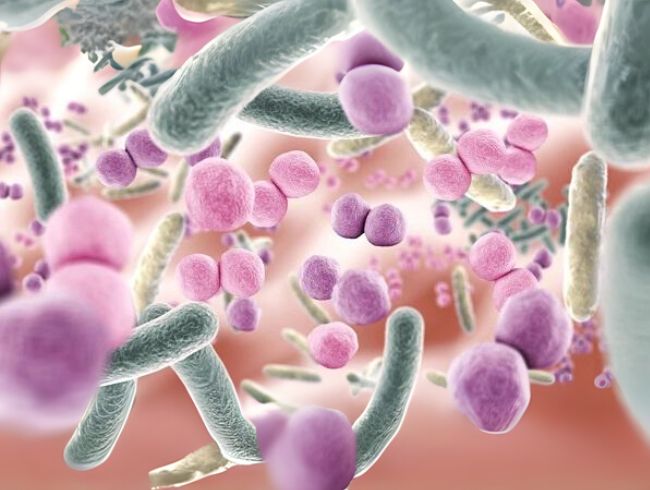It is widely believed that bacteria are harmful and must be destroyed. In this war, humanity is not winning. Bacteria have existed for about 4 billion years and continue to exist. Bacteria are both harmful (pathogenic) and beneficial (probiotic). By destroying them, we kill both harmful and beneficial bacteria and disrupt the biological balance. Many of them become resistant with frequent use of a particular preparation. Bacteria are involved in processes that are vital to humans and the environment, so it is better to try to use them rather than destroy them. Or, as American writer Stewart Brand puts it:
“If you don’t like bacteria, you’re on the wrong planet.”
Stewart Brand
Microorganisms play a crucial role in the lives of humans, animals, and plants.
We are becoming increasingly aware that maintaining the natural microbial balance is the best way to achieve better hygiene and a healthier lifestyle.
With this in mind, we at Perillis Trading have developed a range of products based on beneficial/probiotic bacteria.
PROBIOTICS
Perilis Probiotic Premium probiotic products use a combination of species of specially selected Gram-positive beneficial soil bacteria of the genus Bacillus. The natural origin of the probiotic bacteria helps maintaining ecological purity and biobalance in the environment.


HOW THE PROBITICS WORKS?
The following factors are necessary for the existence of a bacterium: the presence of a nutrient medium and moisture, suitable temperature and pH. When one of these factors is missing, depending on the type of bacteria, they either form spores or die. Perilis Trading Ltd. probiotic products contain spores of gram-positive bacteria, which, upon leaving the vial, initiate bacterial growth in the environment.
These bacteria act through natural, biological mechanisms that are gentler on humans and the environment than traditional chemical agents. The main mechanisms of action are:
1. Enzymatic degradation (biodegradation of pollutants)
Probiotic bacteria produce enzymes such as:
- ipases (break down fats)
- proteases (break down proteins)
- amylases and cellulases (break down carbohydrates and cellulose)
- These enzymes break down organic contaminants into smaller, soluble molecules that are easily removed.
2. Formation of a protective microbial biofilm
Probiotics form a thin, stable layer of “good” bacteria on the cleaned surface. This biofilm:
- protects against new contamination
- keeps enzyme activity over time
- reduces the need for frequent cleaning
The effect can last up to 3–5 days after a single application.
3. Odor removal (biological degradation of odor sources)
Unlike odorants, which only mask odors, probiotics:
- break down the molecules responsible for bad odors (e.g., sulfur, amine compounds)
- convert them into harmless substances such as CO₂ and water
4. Competitive exclusion (fighting pathogens)
After application, probiotic bacteria colonize the surface and:
- use nutrients that would otherwise support the growth of pathogenic bacteria
- synthesize antimicrobial substances (bacteriocins) that suppress harmful microbes
- change the pH or microenvironment so that it becomes unfavorable for pathogens
A study conducted at the Stefan Angelov Institute of Microbiology at the Bulgarian Academy of Sciences found that Perilis Trading Ltd. products containing probiotic bacteria inhibit the growth of the following pathogenic organisms: Staphylococcusaureus, Enterococcus faecalis, Streptococcus pyogenes, Candida albicans.
The most significant sources of allergens
House dust mites are one of the most significant sources of allergens. Mite excrement contains a protein—a digestive enzyme called DerP (from the Latin name for the mite Dermatophagoides pteronyssinus)—which causes allergic reactions and discomfort, including asthma, rhinitis, conjunctivitis, dermatitis, breathing difficulties, and others. More than 21 allergens have been identified, with Derp1 and Derp2 being the strongest.
The Institute of Microbiology at the Bulgarian Academy of Sciences conducted research on the effect of Perilis Bed probiotic on the Derp1 allergen.
For 20 days, five different rooms saturated with Derp1 were treated with Perilis Bed probiotic. The final results showed a more than 100-fold reduction in Derp1 concentration after the twentieth day.

Amount of DERP1 allergen in house dust samples collected from five different rooms every 5 days for one month prior to application of the test product.
When cleaning surfaces and objects, probiotic bacteria break down organic contaminants at a microscopic level, penetrating deep into the surface. At the same time, they create a probiotic film that acts on the treated surface for several days, providing the so-called long-lasting effect.
These qualities of probiotic bacteria make Perilis Probiotic Premium products significantly more effective than classic cleaning preparations, which act superficially and for a shorter period of time.
If we had to summarize, Perilis Probiotic Premium surpasses conventional cleaning products in all indicators of effectiveness, harmlessness, and safety.
SAFETY OF PROBIOTIC PRODUCTS
The probiotic strains contained in Perilis products have been tested in independent European laboratories and are listed by the European Food Safety Authority (EFSA) as agents with a qualified presumption of safety (QPS) – non-toxic.
The probiotic bacteria in Perilis Probiotic products are non-pathogenic and not genetically modified. They are natural microorganisms isolated from nature and are harmless to humans, animals, and the environment.
The bacteria used in Perilis Probiotic are classified as Group 1 (BSL-1) according to the Bacterial Safety Level (BSL) classification, meaning they pose no risk to human or animal health.
RPAS is the system in which probiotics work. RPAS means R – recognition of contamination, P – production of specific correct enzymes, A – decomposition of contamination by cutting the chain of molecules, S – formation of spores. Thanks to this system, bacteria are able to survive in adverse and competitive conditions.
